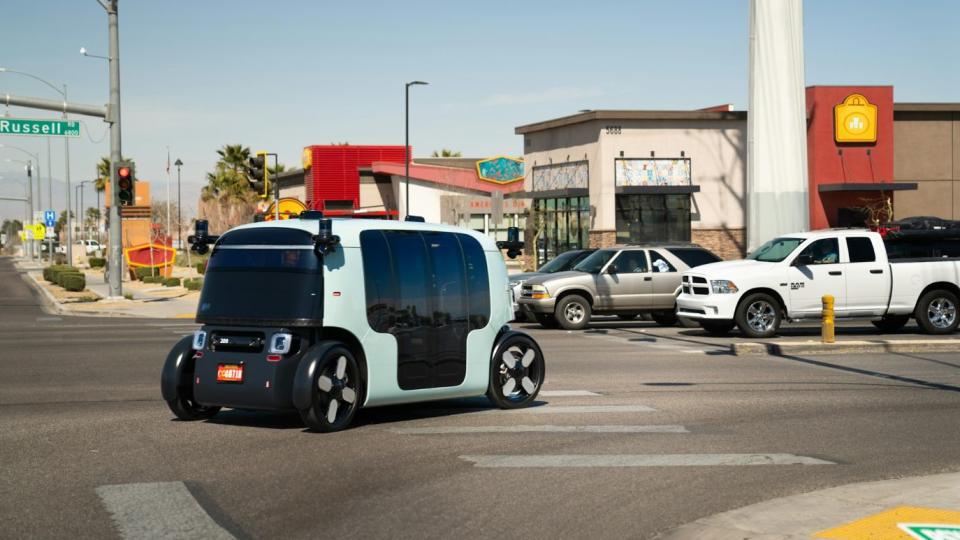Here’s How Amazon-Owned Zoox Is Expanding Its Operations

Driverless shuttle startup Zoox is letting its vehicles drive at slightly higher speeds in Las Vegas and Foster City, while also operating at night.
The Amazon-owned startup plans to offer driverless shuttles of its design, rather than modified EVs like most other autonomous vehicle companies.
The robotaxi industry has seen a number of rapid surges over the past two years, as well as some significant setbacks, while still remaining far from profitable operations.
Autonomous tech developer Zoox is steadily expanding its operations in Las Vegas as well as Foster City, California, after launching its driverless shuttle on a limited, geofenced basis in 2023.
Designed for speeds up to 75 mph, so far the shuttles have only been going about half that fast along a couple of short routes around the company's neighborhoods in the two cities.
Now, Zoox is letting its shuttles reach 45 mph while also expanding its geofence to five miles in Las Vegas, running from the company's office to the south end of the Strip, while also letting its shuttle drive in night conditions and during light rain.
"Driving autonomously at a higher speed increases difficulty in all conditions," Zoox noted. "We've set rigorous internal safety targets, and we did not begin driving these routes until we were able to quantify that we have met and consistently exceeded those targets."
Despite a few major setbacks late last year, the robotaxi industry appears to be inching toward a wider rollout, though it's still confined to the few states and cities where autonomous-vehicle development has been welcomed by state and local governments.
Those AV-friendly states are still limited in number, so for now we're not talking about paying customers and fleets of hundreds of these driverless shuttles.

But in a few years the picture could be very different, especially if the legislative landscape were to change drastically—a tall order with 50-plus jurisdictions, not to count local governing bodies.
Zoox's approach to robotaxis is also a bit different from the majority of commercial efforts we've seen in several countries: The four-passenger vehicles aren't based on existing car models modified for autonomous driving, and there aren't any controls for a human driver, either. This approach introduces its own significant costs, while requiring the ability to manufacture hundreds or thousands of vehicles for a wider commercial debut.
Zoox, owned by Amazon, isn't quite at that stage right now, and neither are most of its competitors.
At the moment the company is focused on safe operations in small sections of two cities in two AV-friendly states. "Driving in these larger areas exposes our robotaxis to the busiest conditions they've ever encountered and provides invaluable data and learnings as we continue to scale," the company notes.
Zoox appears content to take things slow for now, having seen GM-backed Cruise put its robotaxi program, which included a similar shuttle, on the back burner.
But it remains to be seen whether driverless shuttles are really the future of urban transportation, unlike gig economy drivers operating their own cars. The driverless shuttle business model is quite different from the operations of Uber or Lyft, and for Zoox it will mean building, maintaining, and operating its own fleet, bearing all of these costs.
As the ride-hailing industry has demonstrated for the past decade and a half, even when gig economy drivers own and fuel up their own vehicles profitability can remain surprisingly elusive.
"As always, safety is foundational to Zoox, so we'll continue to be measured and thoughtful in our approach to commercialization," the company added. "These critical updates bring us closer to safely and confidently offering Zoox to the public."
Will driverless shuttles like these become common in the next decade, or will this remain a niche approach to urban transport? Let us know what you think.

 Yahoo Autos
Yahoo Autos 